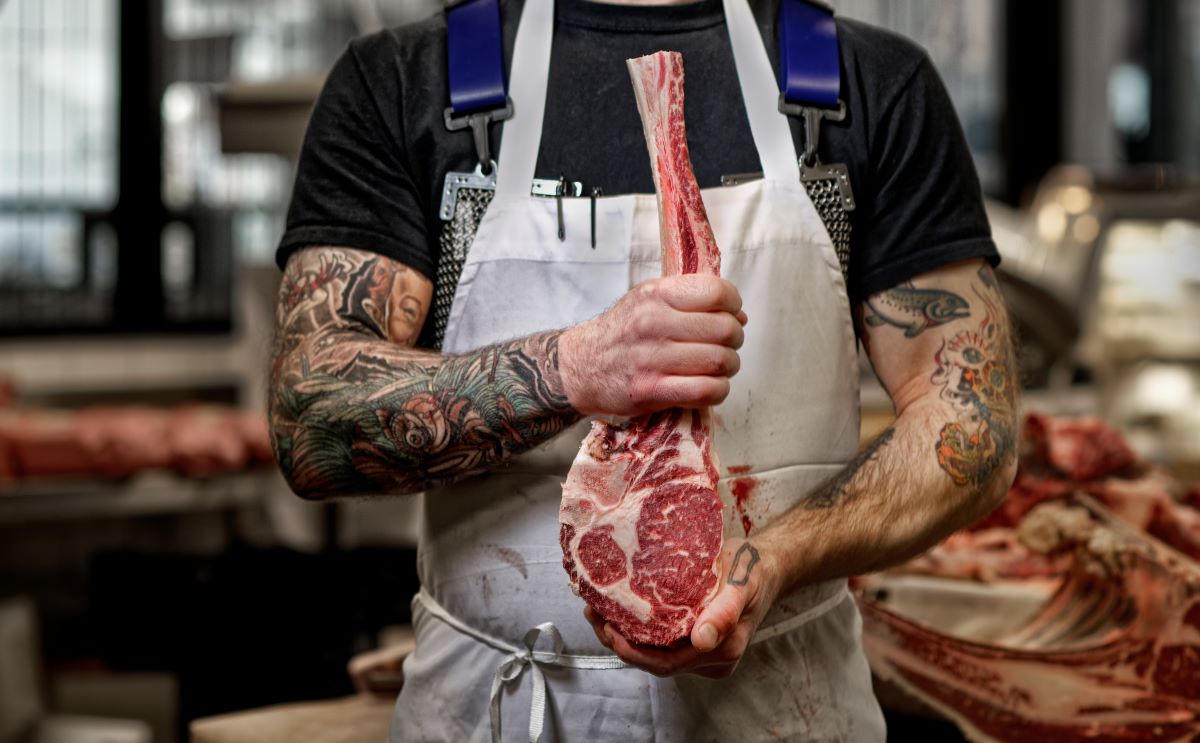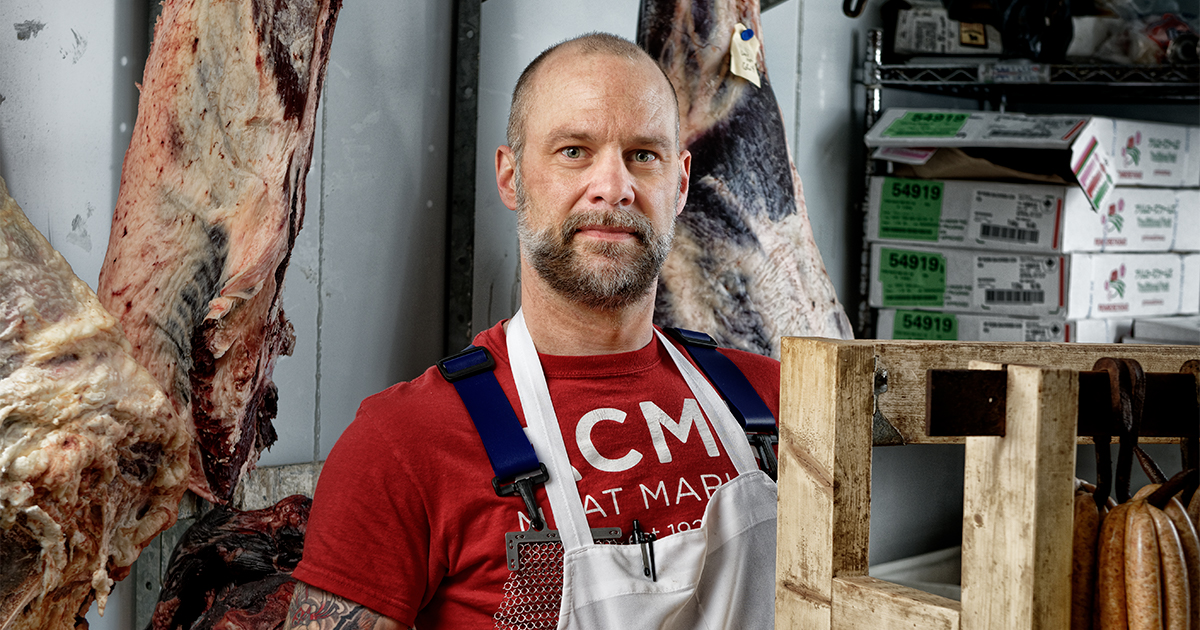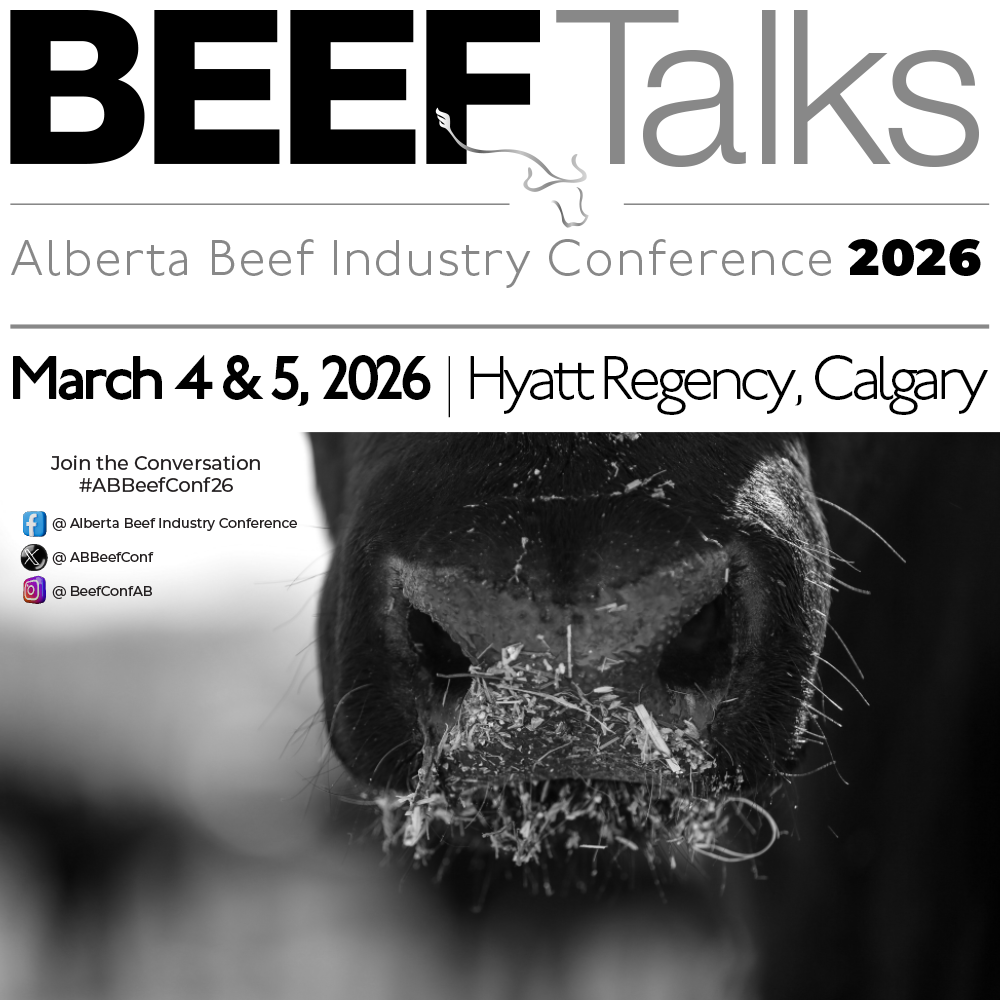AB Direct - Steers
Rail: ---
AB Direct - Heifers
Rail: ---
US Trade- Steers
Rail: ---
US Trade - Heifers
Rail: ---
Canadian Dollar
0.19

Alberta Beef — King of the BBQ
It’s time to fire up the grill.
Enter…the King.
Alberta beef is King of the barbeque, and consumers are happily making the annual switch from winter stews to the summer grill.
In this post, Corey Meyer shares some tips and insights from across the counter at ACME Meat Market.

“When we think BBQ, we think steak. For good reason. Steaks are always best for grilling – done well, it brings out the exceptional flavour and quality. For many of my customers, the BBQ is a stage – and the grilling a performance. There are a few tips that I share with my customers to make the most of their grilling experience.”
The Cowboy Cut – A Cut Above
A standard cut for steaks is 1 inch thick, but we go even a bit thicker for grilling – 1 ½ inches works well. Bone-in rib-eye is popular, but my favourite is the cowboy cut. You get a generous meal – sometimes even with leftovers for a sandwich the next day. The cowboy cut is a rib steak, cut about 1 ½ to 2 inches thick, with frenched bone. It’s a simple cut, but still eye-catching to plate.
Grilled burgers are always a hit too of course. In our shop, “What’s your grind?” is an important question. Our customers know the product and ask for what they want: ⅓ short rib, ⅓ brisket, and ⅓ chuck is most popular. Some prefer it finely ground, and others chunky. We give them choice.
One other grill trend I noticed starting last season was increased demand for cuts like flank and skirt steak. It’s something new for people looking for something different from grilling rib-eye steaks. Perhaps considered lesser quality steaks, people are embracing them for their flavours. They marinate well, you can grill and serve them sliced family style with chimichurri for a deliciously creative dinner.
Read: Hey Corey from the first edition of ABP Magazine
Grilling steaks is a science, and everyone swears by their own formula, but the standard is six minutes, flip, then four. I prefer the usual sear method, but the reverse-sear has been popular for some years now too.
The usual sear involves starting with a super hot grill to seal the juices in, then moving to lower heat to finish. In a reverse sear, you start the steak on medium heat, cook to almost finish, and then move to high heat for that strong seared finish and clean grill marks.
Fads like reverse sear have been more prevalent this past year, for people with more time on social media, watching videos, picking up chef tips to apply in their kitchens. This is really positive — as more than ever before, people are more involved in what they eat, where it comes from and how it’s prepared. It’s terrific. We are gearing up for a great grilling season ahead and hold hope that backyards across Alberta will be once again filled with family and friends, and of course, Alberta beef on the BBQ.
Follow Corey @coreythebutcher to learn more about what’s happening in front of and behind the meat counter.
This article was first published in the May 2021 edition of ABP Magazine.

